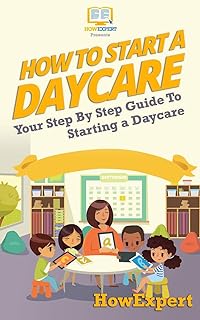


The Toll of Long Waitlists on Family Budgets and Well-Being
Extended waitlists for subsidized child care profoundly disrupt family finances and daily routines. When families face months or even years on these lists, many experience significant economic strain. Unable to secure affordable and quality care, parents often reduce work hours, decline promotions, or leave the workforce altogether, leading to lost income and diminished long-term savings. The pressure to find interim solutions may drive families to costly alternatives that deplete already tight budgets.
- Income reduction: Parents may cut back on employment hours to provide child care themselves.
- Out-of-pocket expenses: Resorting to expensive private care or informal arrangements.
- Workforce participation: Decline in parental workforce engagement affects overall family economic security.
Organizations such as Parent Voices Child Care document these challenges, advocating for increased investment in accessible child care to alleviate financial stress.
How Subsidized Child Care Waitlists Affect Workforce Stability
Long waits for child care subsidies push many families into precarious employment situations. For caregivers, missed days or inconsistent schedules can jeopardize job retention and career progression. The broader economy suffers as a result, with diminished labor participation rates and reduced productivity.
- Job insecurity: Erratic child care leads to absenteeism.
- Career stagnation: Limited ability to accept demanding roles.
- Employer costs: Higher turnover and recruitment expenses.
Resources like Child Care Crisis Measures examine policy responses to streamline subsidy access and reduce these waitlists, aiming to support workforce stability.
Key Factors Driving Lengthy Waitlists for Subsidized Care
The persistent shortage of subsidized child care spots stems from complex systemic issues. Funding shortfalls create insufficient availability relative to demand, especially in underserved regions known as child care deserts. Additionally, payment rates set by subsidy programs influence provider participation, limiting slots for subsidized families.
- Insufficient funding: Subsidies do not cover all eligible children.
- Provider participation: Low payment rates discourage some centers from accepting subsidies.
- Geographic disparities: Rural and low-income urban areas often lack accessible care.
Exploring solutions through initiatives like BrightPath’s 15 Years of Support reveals how sustained investment can expand subsidized care availability over time.
Strategies to Address Subsidized Child Care Waitlists
Effective strategies to manage and reduce waitlists include prioritization protocols, increased funding, and expanding provider networks. Some states are experimenting with innovative models that integrate community organizations like The Salvation Army to provide targeted child care support. Additionally, partnerships with entities such as Early Head Start enhance early learning opportunities aligned with families’ needs.
- Priority setting: Serve the most vulnerable families first.
- Funding increases: Boost subsidies to expand access and provider retention.
- Community partnerships: Collaborate with organizations experienced in child services.
For insights on these approaches, see the comprehensive perspectives shared by New Mexico Universal Child Care advocates.
The Role of Trusted Organizations in Navigating Child Care Challenges
Trusted organizations provide invaluable resources and support to families navigating subsidized child care systems. Entities such as ChildCare Aware and KinderCare offer guidance on subsidy programs, provider options, and accessible care services. Platforms like Care.com and UrbanSitter expand families’ ability to find quality care providers beyond the subsidies.
- Information access: Helping families understand subsidy eligibility and application processes.
- Provider matching: Connecting families with licensed and vetted child care services.
- Advocacy: Promoting policies to reduce wait times and enhance care quality.
Learning from associations such as the National Association for the Education of Young Children ensures a holistic approach to early childhood education and care quality improvement.


